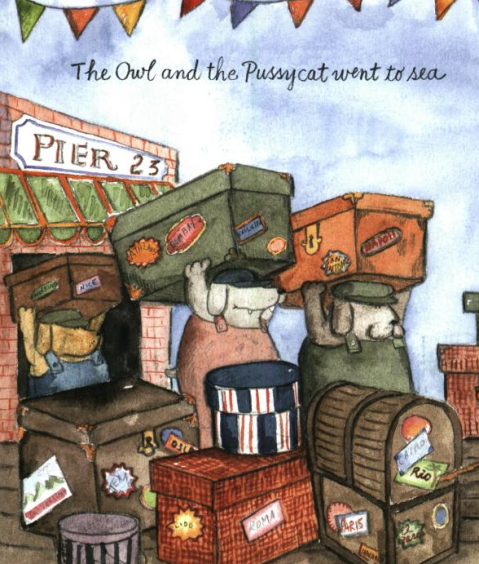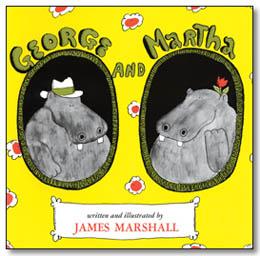 I see the Google doodle for Edward Lear’s 200th birthday.
I see the Google doodle for Edward Lear’s 200th birthday.
As Michael Rosen writes, Lear began writing nonsense during his stays at the Knowsley estate of Lord Stanley, who had hired the young Lear to paint his menagerie. He was so bored by the company: “the uniform apathetic tone assumed by lofty society irks me dreadfully … nothing I long for half so much as to giggle heartily and to hop on one leg down the great gallery – but dare not.”
So, Edward Lear’s The Owl and the Pussycat:
I
The Owl and the Pussy-cat went to sea
In a beautiful pea green boat,
They took some honey, and plenty of money,
Wrapped up in a five pound note.
The Owl looked up to the stars above,
And sang to a small guitar,
‘O lovely Pussy! O Pussy my love,
What a beautiful Pussy you are,
You are,
You are!
What a beautiful Pussy you are!’
II
Pussy said to the Owl, ‘You elegant fowl!
How charmingly sweet you sing!
O let us be married! too long we have tarried:
But what shall we do for a ring?’
They sailed away, for a year and a day,
To the land where the Bong-tree grows
And there in a wood a Piggy-wig stood
With a ring at the end of his nose,
His nose,
His nose,
With a ring at the end of his nose.
III
‘Dear pig, are you willing to sell for one shilling
Your ring?’ Said the Piggy, ‘I will.’
So they took it away, and were married next day
By the Turkey who lives on the hill.
They dined on mince, and slices of quince,
Which they ate with a runcible spoon;
And hand in hand, on the edge of the sand,
They danced by the light of the moon,
The moon,
The moon,
They danced by the light of the moon.
My favourite illustrated version is by James Marshall:















